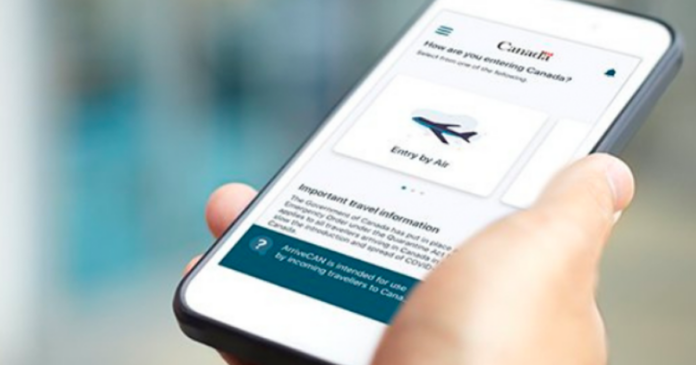Dr. Jennifer Grant is an infectious diseases physician and a Clinical Associate Professor at the University of British Columbia’s Faculty of Medicine.
The federal government spent $54 million on its ArriveCAN phone app. Put aside the “how did we get to such a ridiculous number for functionality that a 15-year-old could cobble up,” question – which has been addressed elsewhere – and let’s get to the meat of the issue.
The putative reason for ArriveCan was to improve public health during the COVID-19 pandemic. While the Liberal government claims that “tens of thousands of lives were saved,” supportive data – specifically data showing that the app would outperform paper documents – are notably absent.
In fact, there is no evidence that a single life was saved, or even modestly improved. Proof of vaccination does not require an electronic record: As a technology, paper has challenges, but we have been using it effectively since the time of Babylon.
Is there a role for an app that makes life easier? Well, probably, but only if it actually does. Instead, the Canada Border Services Agency confirmed that agents spent hours to help those who wanted to travel, but lacked IT skills to handle the app – worsening border delays.
The major issue with the ArriveCAN app, however, is not its superfluousness or its inconvenience, but rather its opportunity cost. What could $54 million have done for public health instead to truly impact the wellbeing of Canadians?
Data on public health interventions with the greatest return on investment do not include cell-phone apps. Instead, specific policies and prevention programmes could have resulted in longer and better lives. How so? Here are some ideas.
The first obvious option would have been to just not spend $54 million, thereby reducing the debt, now reaching $1.4 trillion. Our children will pay for our profligacy. But let’s put that aside.
Assuming we wanted to spend money on health, with $54 million dollars we could have paid the salaries of 760 front-line nurses, or bring 675 new nurses through a 4-year degree programme. This would have alleviated the pressure on acute care where our sickest patients were.
Alternatively, we could have paid for the education of 3,600 new licenced practical nurses to reduce the risk of transmission in long term care (LTC). Since LTC was the place of most mortality (representing 80% early in the pandemic), even a modest reduction of transmission could have substantially reduced the death rate.
Had we used money on that scale for vaccination teams, we could have found culturally appropriate personnel to go door-to-door in high-risk neighbourhoods to offer vaccine, in the language spoken at home, to vulnerable elders who had been unable to get to vaccine clinics.
With $54 million we could have deployed 450 two member teams for a year. If they were able to vaccinate only 10 people a day on average, in a year, we would have managed around a million more vaccines, saving an estimated 200,000 lives.
During school closures, those of the lowest socio-economic status suffered massive learning losses. The reasons for this are myriad, but include lack of infrastructure and home supports. Since educational attainment is a powerful predictor of future health outcomes, providing internet for those without and educational support for children at risk during the pandemic would have been money much better spent.
Vaccine uptake for routine childhood vaccines dropped substantially during the pandemic period. Vaccines are amongst the most cost-effective programmes after clean water and sewage management. Using even some of the money spent on ArriveCAN for follow-up of new mothers to support vaccine appointments could have made a huge difference in protecting our children from easily preventable childhood illness.
Around 1.4 million Canadian children live in food-insecure households. During the pandemic early childhood nutrition programmes were severely impacted by school closures, resulting in a double whammy: households with children were amongst the more likely to have increased food insecurity during the pandemic and closing schools made help harder to get.
If instead of ArriveCAN we had provided expanded food services, we could have improved the lives of our most vulnerable citizens, paying dividends for years. In fact, school nutrition programmes are a great “bang-for-your-buck” intervention at remarkably modest costs, with a return on investment of $3 to $10 per dollar spent.
Outside of COVID, money directed to smoking cessation, community exercise programmes, early childhood education, sexual health, safe injection, to name just a few, would have done more for Canadians than ArriveCAN.
Instead, we have another government IT white elephant. It should be relegated to the heap like the Phoenix pay system.
